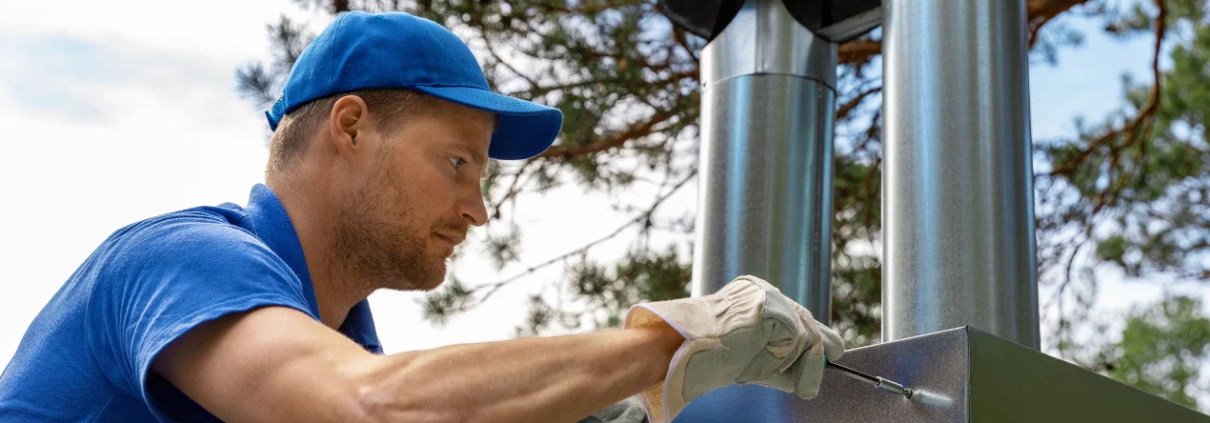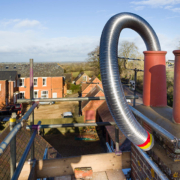How Chimney Liner Installation Works in Camarillo Homes
If you’ve got a chimney in your Camarillo home, there’s a good chance you haven’t thought much about what’s inside it—at least, not until something goes wrong. I totally get it. Chimneys are kind of like the appendix of your house: they’re just there… until they aren’t—especially when it comes to the chimney liner.
It’s not something you’ll notice on a regular day. But when it starts to fail (or worse, when you never had one to begin with), you’ll feel it. Not always in a dramatic, smoky way—but through poor heating, strange odors, and, in the worst-case scenario, safety hazards.
Let me walk you through how chimney liner installation works in Camarillo homes—step by step—so you can understand what’s going on behind those bricks and mortar.
Why Chimney Liners Actually Matter (Yes, Even in Sunny Camarillo)
Here in Camarillo, we’re lucky to have mild weather most of the year. But come winter—or even on chilly spring nights—a lot of us still enjoy the crackle of a real wood fire or the cozy warmth of a gas fireplace. That’s when your chimney starts doing real work, and that’s also when the liner steps in.
So, what is it exactly? Picture a sleeve or a pipe that runs through the inside of your chimney. It guides the smoke, heat, and gases safely out of your home without letting them touch or damage the chimney walls.
Here are some things a chimney liner helps with:
| Feature | What It Does for Your Home |
|---|---|
| Protects the masonry | Keeps heat and smoke off the bricks |
| Improves fireplace performance | Helps your fire burn cleaner |
| Keeps carbon monoxide out | Channels dangerous gases outdoors |
| Makes chimneys safer | Prevents overheating and damage |
| Supports different fuel types | Works with gas, wood, or pellets |
If your home was built a while ago, especially before the ’80s, it might not have a liner at all—or the existing one could be cracked or crumbling. That’s when installation comes into play.
Safety: The Real Reason to Pay Attention
Most people don’t realize how dangerous a damaged—or missing—liner can be. Sure, it might not cause a problem today, but over time, without that layer of protection, heat and gas can seep into the walls of your home. That’s not just bad news for your chimney—it can be a serious fire hazard.
I’ve talked to more than one homeowner who thought they were just dealing with a smoky room, only to discover later that the liner had failed completely and hot air had been scorching the inside of their chimney wall. Yikes.
One local chimney expert told me:
“Your chimney’s job is to get the smoke out, but without a liner, it’s like trying to drink coffee without a cup—it’ll go everywhere you don’t want it to.”
The safety benefits alone make installing or replacing a chimney liner worth the effort. It helps prevent chimney fires, stops toxic fumes from sneaking indoors, and keeps your home structure in better shape over the years.
So, What’s This Going to Cost?
Let’s talk numbers—because that’s usually the first question most folks ask.
The price of chimney liner installation can vary depending on the height of your chimney, the type of liner you choose, and how tricky the job is. But here’s a general breakdown to help you get a sense of things:
| Type of Liner | Average Cost (Installed) |
|---|---|
| Stainless Steel (most common) | $1,200 – $3,000 |
| Aluminum (for gas-only systems) | $800 – $1,500 |
| Clay or Cast-in-Place | $2,000 – $5,000+ |
Stainless steel liners are the go-to for most homes in Camarillo because they last long, are compatible with many fuel types, and hold up well even with temperature swings. While it’s not the cheapest home repair out there, it’s definitely one of those “protect now, save later” kind of investments.
What If You Need It Done Fast?
Stuff happens. Maybe you scheduled a chimney sweep and they found a cracked liner the day before you planned to have guests over for a cozy fire night. Or maybe your carbon monoxide detector started chirping, and now you’re in panic mode.
Good news: Many companies in the Camarillo area offer emergency chimney services, including fast liner installations. In these cases, you’re probably looking at paying a little extra for the quick turnaround—maybe $100 to $300 more, depending on the situation—but it’s worth it when safety is on the line.
These rush jobs can usually be done in a few hours or less if the chimney isn’t severely damaged. Just make sure you’re calling a reputable, certified installer. No cutting corners when it comes to fire and fumes.
Chimney Liner FAQs (Because You Might Still Be Wondering…)
Q: How long does a chimney liner last?
A: Stainless steel ones can last 15–25 years (or more) if maintained properly.
Q: Can I install one myself?
A: You could try, but it’s risky, especially if your chimney is tall or oddly shaped. Professionals have special tools and know-how—it’s worth hiring out.
Q: Do I really need one if I only use my fireplace once a year?
A: Even occasional use creates heat and gases. If your liner is broken or missing, it still puts your home at risk.
Q: How can I tell if my current liner is bad?
A: Most of the time, you can’t without an inspection. That’s why it’s smart to have your chimney looked at every year or two.
Q: Will a new liner mess up my chimney or roof?
A: Nope. The process is mostly internal, and experienced installers know how to keep things neat.
Final Thoughts: Chimney Liners—Quietly Doing Big Work
In a place like Camarillo, where fireplaces are used more for comfort than survival, it’s easy to overlook things like chimney maintenance. But that quiet little chimney liner inside your wall? It’s doing some seriously important work every time you light a fire.
If your fireplace hasn’t been inspected in a while, or if you’re buying an older home, it’s a smart move to have the liner checked—or installed fresh if needed. It’ll keep your home safer, your air cleaner, and your fires burning better.
And honestly? Once you’ve got peace of mind that your chimney’s in good shape, those cozy nights by the fire feel a whole lot better.
Read more: Camarillo Chimney Sweep











Leave a Reply
Want to join the discussion?Feel free to contribute!